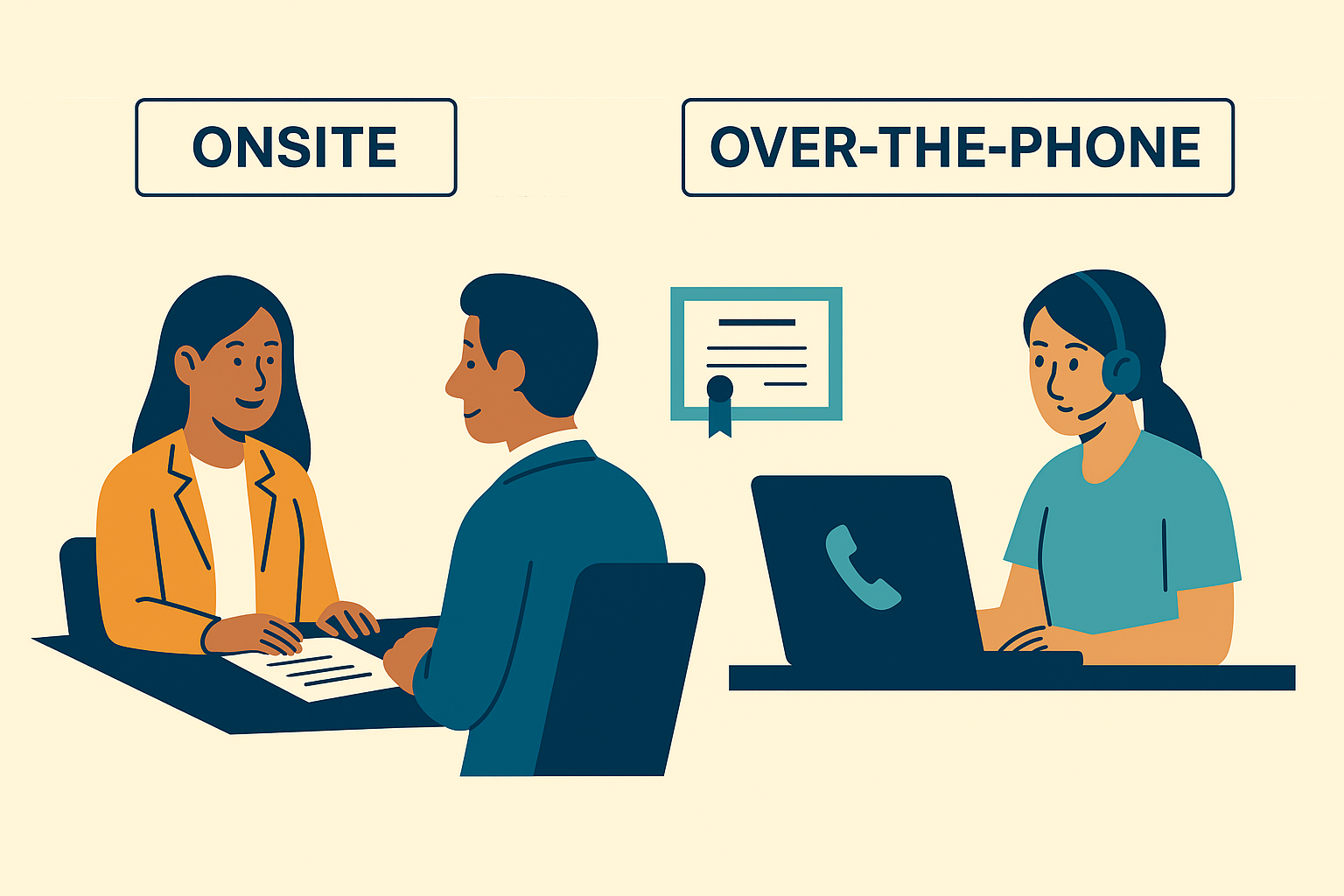
Onsite vs Over the Phone Interpreting
Onsite vs. Over-the-Phone Interpreting: What Actually Works Best in 2025?
If you’re trying to connect across languages, one decision can make or break the entire experience: Do you bring an interpreter onsite, or do it over the phone?
It’s not just a logistics question—it’s about nuance, cost, urgency, and context. And if you’re working in legal, healthcare, government, or public services, the wrong choice can cost you more than just money. Let’s break it down so you can make the right call.
Onsite Interpreting: When Presence Matters
Onsite interpreting means the interpreter is physically present at your location. This is especially useful in high-stakes or sensitive scenarios like medical appointments, court hearings, or in-depth business negotiations where body language, tone, and cultural cues play a major role.
Here’s when onsite interpreting shines:
- Maximum Accuracy: Interpreters catch nonverbal cues and emotional tone, reducing the chance of misunderstandings.
- Cultural Sensitivity: Having a human in the room who understands the cultural subtext can make or break the interaction.
- Real-Time Clarification: Questions can be addressed on the spot, and the conversation flows naturally.
Over-the-Phone Interpreting: Speed, Scale, and Simplicity
Over-the-phone interpreting (OPI) is ideal when time is tight and geography is a challenge. The interpreter connects to the conversation by phone, often within seconds. It’s fast, efficient, and available 24/7 for hundreds of languages.
Best for quick or routine interactions—like customer support, intake calls, or urgent service requests—OPI offers:
- Instant Access: Interpreters are available on demand, no scheduling or travel needed.
- Lower Cost: No travel or wait time means fewer overhead expenses.
- Nationwide Coverage: Get connected to interpreters fluent in rare or less commonly spoken languages no matter where you are.
So Which One Should You Choose?
It depends on the context:
- Choose onsite if the conversation is long, complex, culturally sensitive, or emotionally charged.
- Choose OPI for speed, routine check-ins, emergencies, or when working across multiple regions quickly.
Think of it like this: onsite interpreting is a tailored suit. OPI is a versatile, ready-to-wear option. Both serve a purpose—but your situation determines the fit.
How TransOptimum Helps
We provide both onsite and over-the-phone interpreting in 300+ languages, with trained professionals ready to handle your needs—whether it’s a sensitive legal proceeding or a last-minute medical call.
Our interpreters are HIPAA-compliant, confidentiality-trained, and equipped with the cultural fluency to bridge more than just language gaps. We work with government agencies, healthcare systems, law firms, and private businesses of all sizes.
Need Help Choosing?
Don’t guess. Schedule a consultation with our team and we’ll help you assess the best option for your workflow, timeline, and budget.
Because when it comes to language access, there’s no one-size-fits-all. Only what works.